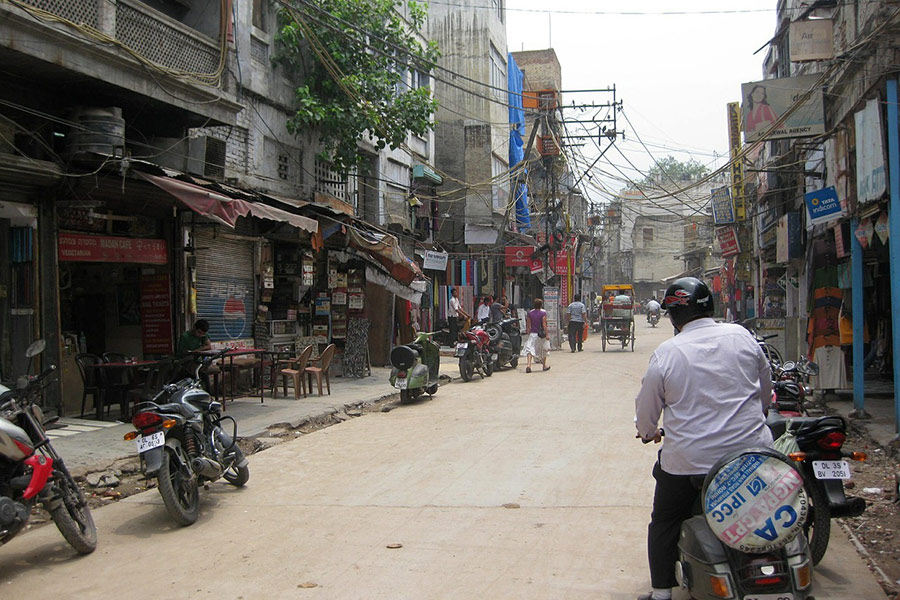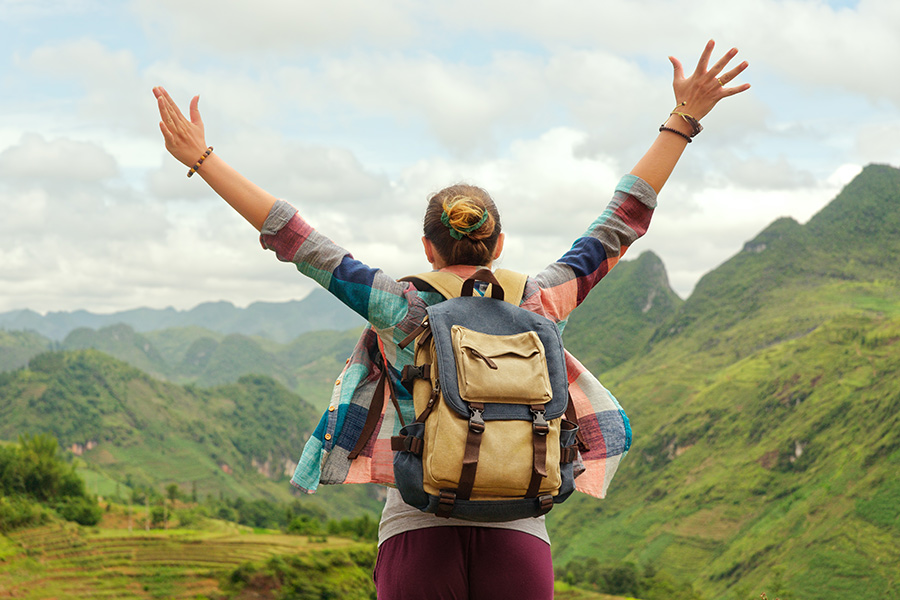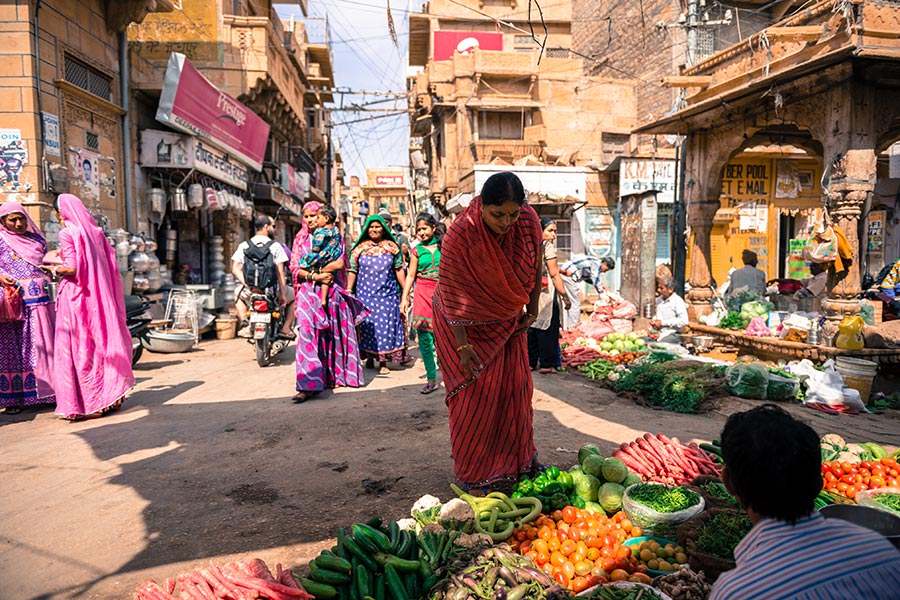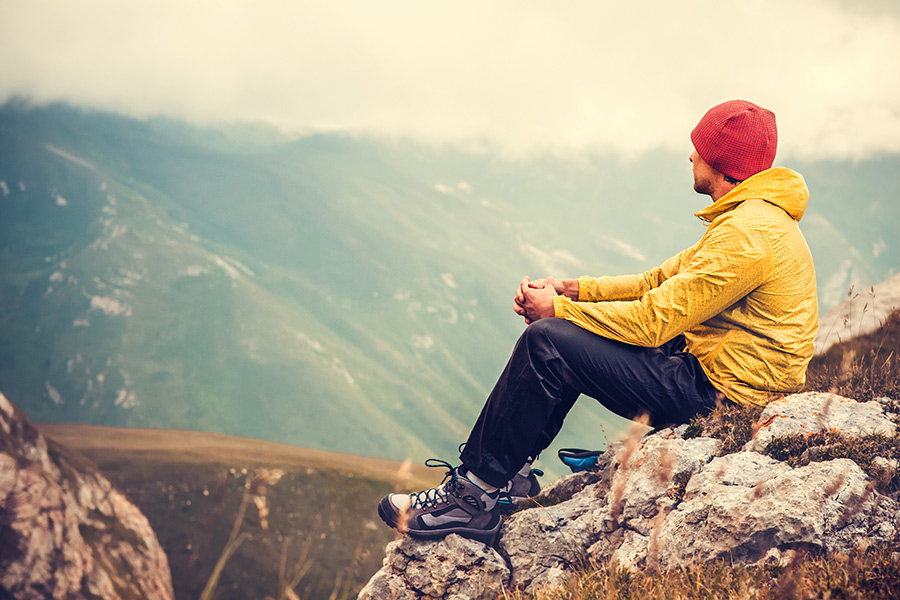TOUR IN INDIA: WHAT TO PACK IN THE SUITCASE
The desired moment is about to arrive: the visa for the entry into India has been approved and now it is essential to prepare the suitcase… in a few days we leave. In order not to run into problems once we arrive at our destination, we will have to make a small list of necessary things in advance, which we cannot do without. This is the right way to face the trip in peace and quiet without forgetting anything. We therefore plan in the best possible way the contents of our suitcase, which will accompany us on our trip to India, in order to reduce any possible inconvenience as much as possible, taking note of all the advice that follows, regarding both the things to bring and the things to avoid, when we decide to visit this fascinating country.
SOME GENERAL CONSIDERATIONS
Let’s start from a series of considerations that will help us to better understand why some objects should never be missing, in the luggage that will accompany us on our trip to India, while others would be totally useless if not “harmful” and it is therefore better to avoid taking them with us.
CUSTOMS AND TRADITIONS IN INDIA: WHAT NOT TO BRING
We have repeatedly stressed in our articles the importance of respecting, on the part of the traveller, the culture and traditions of India, as of any other country of which one is a guest. This is one of the fundamental pillars of responsible tourism and this is something we must be clear about as soon as we prepare our luggage for departure.
Especially with regard to clothing, in India, it is necessary to remember that, in every place dedicated to prayer, sanctuaries, temples and other facilities, the woman must wear clothes that cover the whole body, including shoulders, and, depending on the place, she must also cover her head.
Let’s avoid carefully, therefore, to wear mini dresses, tank tops, short trousers or dresses that are too low-cut. A good rule of thumb is to always carry a shawl that you can use if necessary.
HOW TO DRESS IN INDIA TO BETTER FACE THE CLIMATE
The Indian nation is a hot country. The seasons alternate between wet and dry climates and temperatures will never get cold, except in the northern mountainous areas, and in the latter case only at a considerable altitude. The suggestion, therefore, is to put in your suitcase for the trip to India mainly light clothing, in cotton or linen. If your trip takes place during the summer season, remember to cover yourself well so that your body is protected from burns and your body temperature is kept at an acceptable level. Also, take several changes of shirts or t-shirts with you. If your trip to India falls during the rainy season (monsoon) or winter, remember to pack at least a sweater and a heavy jacket for the cold.
INDIA AND HYGIENE, OTHER TRICKS ON HOW TO DRESS
It is a well-known fact that hygiene and cleanliness in India are not optimal. In the street as well as in public places, therefore, you have to be very careful, and even in this case it is important to know how to dress in India to overcome this kind of inconvenience. To this end, include a type of closed shoes in your suitcase for your trip to India, if possible. In case it is too hot and you want to put something open on your feet, you should always include a model of footwear with a sturdy, protective sole.

TOUR IN INDIA: WHAT SHOULD I PACK?
Once the necessary considerations have been made, let’s now see in more detail what are the indispensable things to pack in your suitcase to visit India. The indications that we are going to give you will be useful both if you travel alone and you plan to move independently, as well as you are guided by a tour operator and plan to stay in a hotel.
1) PHOTOCOPIES OF DOCUMENTS FOR THE TRIP TO INDIA
Preparing photocopies of the documents needed for your trip to India can be useful in case you lose them or if you need to purchase a local phone card. Place the originals in the hip pack that you will always keep with you (we will talk about it later in detail) and put the copies in your suitcase. Also bring with you any allergy or disease certifications you may have.
2) USE OF CASH AND CREDIT/DEBIT CARDS IN INDIA
For credit/debit cards and ATMs, check your balance before you leave and always use them very carefully once you arrive in India. One piece of advice we would like to give you is to divide the cash into two wallets, to be kept in two different places, safe, so as to avoid unpleasant surprises. You can find the ATMs for withdrawals in all Indian cities: always check the percentage of commission they apply on the withdrawal of cash and be very careful when withdrawing the money (muggings or robberies can always happen), a minimum of caution does not hurt. Finally, avoid changing the euros inside the airport because the exchange rate is not convenient at all. It is much better to exchange the banknotes directly at the hotel or by getting advice of an exchange office in the city once you arrive in India.
3) HOW TO KEEP YOUR LUGGAGE SAFE
Security padlocks, increasingly used for travel abroad, are very useful to secure trolleys, backpacks, suitcases and more. There are the latest generation, able to perform different functions and ensure the safety of luggage. You can use them if you travel by train through India or if, once you arrive at your hotel, you discover that there is no safe.
4) MEDICINES TO TAKE TO INDIA
There are a number of medicines and parapharmaceutical products that you should definitely keep in your suitcase when you decide to leave for India. Below we list those that are certainly useful, if not indispensable:
- Total sun protection with a high factor and an after-sun (a sun protection cream in India is very difficult to find and the quality leaves something to be desired). Already in February or March, the sun is very strong, so imagine in summer.
- Amuchina
- Lactic enzymes
- Antidiarroic
- Multi-vitamin supplement (especially in the summer season)
- Supplement of mineral salts (magnesium, potassium, etc.)
- Painkiller
- Antipyretic (es. Tachipirina)
- Aspirin
- Antibiotic
5) EARPLUGS AGAINST NOISE
It will probably seem strange to you but you will be tempted to use them even during the day, while walking on the street: in India drivers love to honk their car horns! Not only that, if a wedding is celebrated near the hotel where you are staying, you may be surrounded by deafening music and songs that last all night long.
6) BATHROOM FACILITIES
- toilet paper (there is often no toilet paper in public toilets)
- wipes
- tissues
- thermometer
- Plasters
- disinfectant
- cotton wool
- insect repellent sprays or ointments (make sure the packaging specifies “tropical mosquitoes”)
- latex gloves
- sterile bandages
- eyewash for eye problems
- paper masks (if you are going to a city with a high pollution rate)
- marigold healing ointment for wounds
- toothbrush, toothpaste and floss, if necessary
- arnica ointment for bruising and falling contusions.

7) WHICH CLOTHES TO TAKE WITH YOU TO INDIA
With regard to the type of clothing to pack for a trip to India, we need to consider a few crucial aspects. As we have already mentioned, it all depends on the time of year we leave and the parts of India we choose to visit.
Temperatures vary greatly depending on the region we are in. In the Ganges valley and a large part of Rajasthan, the heat can reach as much as 40 degrees, while on the peaks of Ladakh, the temperature can drop as low as -30 degrees.
We therefore try to pack clothes that are congenial to the area we have chosen to visit. Here are some suggestions on how to dress in India.
If we chose to visit South India and Central India:
- long pants made of lightweight fabric, reaching all the way over the ankle. Preferably dark colored because they get less dirty. They must be long to protect from insect bites, always numerous, and in particular from the infamous mosquitoes
- long-sleeved shirts that protect the arms from insect bites, as the pants, and possible sunburn. The long and comfortable dresses, in fact, have this merit
- terry socks (they protect the foot and absorb sweat). They are also indicated when visiting temples. Consider that in some places of prayer there are a lot of mice running around on the floor and, even if at the entrance they could give you some over-shoes, it is better not to leave anything to chance and therefore have an extra protection for your feet.
- about your underwear, you’ll need two or three changes depending on how long you stay in India. The clothes, if washed, dry easily, so take this into account, and for this purpose we suggest, as you will see later, to bring with you a piece of rope to hang the laundry
- a swimsuit
- a pareo (women are advised to wear it on their bathing suit if they go to the beach bar, for example, always as a matter of decorum and respect for Indian culture and traditions)
- a hat to protect you from the sun
If you travel to North India
Consider that, especially in winter, the temperature range between day and night in Northern India is very marked. Heating in houses does not exist and electric stoves or a heat pump air conditioner are used to overcome the harsh climate. Your equipment will therefore be as follows:
- a waterproof jacket with hood, k-way type.
- a wool sweater
- a hoodie
- gloves and wool cap
8) FOOTWEAR SUITABLE FOR TRAVELS TO INDIA
We have already mentioned some advice regarding footwear to wear in India, but we will need to give you a few more details about it. If you plan to visit South India and the central areas of the country, trekking shoes or sports shoes will be indicated. In any case, depending on the type of excursions, you will take with you:
- comfortable closed shoes
- open shoes or sandals (they are very comfortable when they have to be taken off to enter temples and they can be washed easily)
- flip-flop sandals (flip-flop shoes are also good, especially if you have to walk a lot, however if the hygiene of the place we are visiting is not the best, prefer closed-toe, sneakers or hiking shoes)
- boots, if hiking in the mountains (North India – Himalayas or cold highlands) is planned
9) A SMALL BACKPACK AND A HIP PACK
The hip pack, which we have already mentioned, is an indispensable ally in your trip to India. In fact, you will put documents and money inside it. In this way, you will keep your personal belongings safe, having locked it in place. A small backpack, on the other hand, will be used to store the things you need to keep at hand during your travels: the guide of India, handkerchiefs, sanitary towels, glasses, hat, etc.. (once you have left your larger luggage in the hotel).
10) UNIVERSAL ADAPTER FOR SOCKETS AND USB BATTERY CHARGER
Normally, adapters for sockets can also be found at the airport when you are preparing for departure. The cost of these accessories is between 10 and 25 euros. This may also be necessary if you are staying in a good hotel because sockets with multiple adapters often do not work. This tool should not be missing in your suitcase for your trip to India, as well as a USB charger, the classic extra battery called “Power bank” that allows you to recharge your mobile phone in the absence of a socket.
11) A FLASHLIGHT
Indispensable for any power outages during the night. In the smaller cities of India, night lighting is lacking and, in the inner countries, it is practically non-existent. Also consider packing rechargeable batteries.

12) A MAP OF INDIA
It will be very useful to visit at best the areas of India that you choose to visit, and it is essential to orient yourself if you make excursions on your own. Evaluate the paper version or the digital version, as you prefer (or both for safety, in case your smartphone has a dead battery).
13) A SMALL POCKET KNIFE
This multi-purpose tool can get in your way as needed, from opening a package to cutting a string to hang laundry. Buy it of a good brand, so that you don’t get stuck at the climax. Don’t forget to pack it in your checked luggage and not in your “hand luggage”, otherwise it will be confiscated immediately on boarding.
14) TRAVEL SEWING KIT
For emergencies, like ripped pants or buttons that come off.
15) PLASTIC BAGS
Useful in any occasion, especially to share laundry (dirty/clean) or to organize the items in the luggage you will take to India, as in other countries.
16) SPARE SUNGLASSES AND EYEGLASSES
Essential to protect the eyes from strong light and heat. A spare pair of glasses are necessary to avoid problems in case you lose them.
17) WIRE TO DRY CLOTHES AND A FEW CLIPS
As we have anticipated, in India, especially in the summer, the clothes you wash dry in a short time. This allows you not to carry too many changes in your suitcase so it is worth adopting this practical solution.
18) SPOON OR TRAVEL CUTLERY
In India, as you know, you eat with your hands. However, if the first few days you find it difficult to adapt to the local custom, you can make up for it by using cutlery until you are familiar with this Indian tradition.
19) ONE OR TWO BOOKS TO READ WHILE TRAVELLING
Reading is a companion who can entertain you at any time. During the flight or on longer trips it could help you to better appreciate the spirit of the journey, perhaps with themed readings.
20) A NOTEBOOK AND A PEN
If you have decided to write a diary about your trip to India, bring with you a notebook and a pen to write down reflections or considerations about your experiences, you will find that it will be a decisive choice. Alternatively, you can also use the notepad on your phone but, as you can imagine, it will not be the same and there is always the risk that the battery will leave you “stranded”.
21) A CAMERA
We’re sure you won’t resist the temptation to take thousands of pictures once you get to India. In this regard the advice is to provide you with an additional memory card for your camera, so you can be sure to have more storage space for your photographs. The Indian population is now accustomed to tourists taking pictures all the time. However, it is ALWAYS good practice to first ask for permission to take the photo, especially if it is a religious ceremony or if the shot affects women and children. If you decide to use your smartphone to take photos, remember that there is an option to store them online automatically when a WiFi connection is available.
22) TORCH FOR READING WHEN THE LIGHTING IS INSUFFICIENT
If you are in the habit of reading before going to sleep, a small reading torch (of those that are applied to the book by means of a small spring) with rechargeable batteries will surely suit you, especially if your Indian place of stay does not provide lamps or candles.

FURTHER SUGGESTIONS ON WHAT TO BRING TO INDIA
Some final advice regarding the things to take with you on your trip to India.
BUY AN INDIAN PHONE CARD ON ARRIVAL
If you plan to stay in India for a long enough period of time, you may find it useful to buy a phone card for your smartphone so that you can use it for possible emergencies (which we hope there are not, of course) and also to have the possibility to use the Lonely Planet guides in digital format, more convenient than the paper one, using a data connection to have them available everywhere, even where there is no WiFi signal. All this depends, of course, on the type of trip you have chosen.
VACCINATIONS FOR TRAVELS TO INDIA
No mandatory vaccinations are required in India. However, if you want to leave more peacefully, consult your family doctor or contact the Traveller’s Medicine, on which vaccinations it is more prudent to do (they may recommend those for Hepatitis A and B, Typhus, anti-malarial prophylaxis if you plan to visit rural areas).
MEDICAL PRESCRIPTIONS
If you need to take specific medicines, make sure that you have with you both the medicines to take to India for the time you will be staying in the country, but also a prescription from your doctor for a prescription for any eventuality.
SAFETY IN INDIA
Like every tourist country, India is also at risk for some security problems (thefts, scams, etc.) The first advice is to always present your documents in photocopy, even to the police: avoid handing over the originals, if possible. For women it is certainly good practice to respect the rules of local culture and tradition in terms of clothing, so avoid visiting the areas considered at risk or going there alone, especially in the evening. In any case, the main rule to keep in mind is common sense.
Now that your suitcase is ready, all you have to do is choose the most suitable itinerary.
And you, are you ready to live one of the most exciting experiences of your life?

